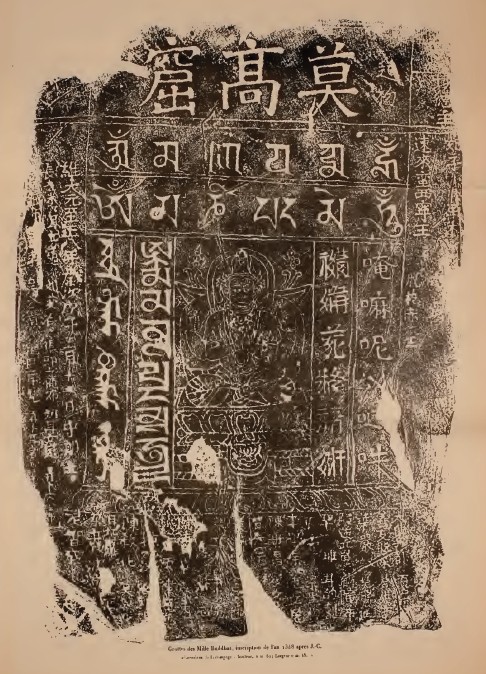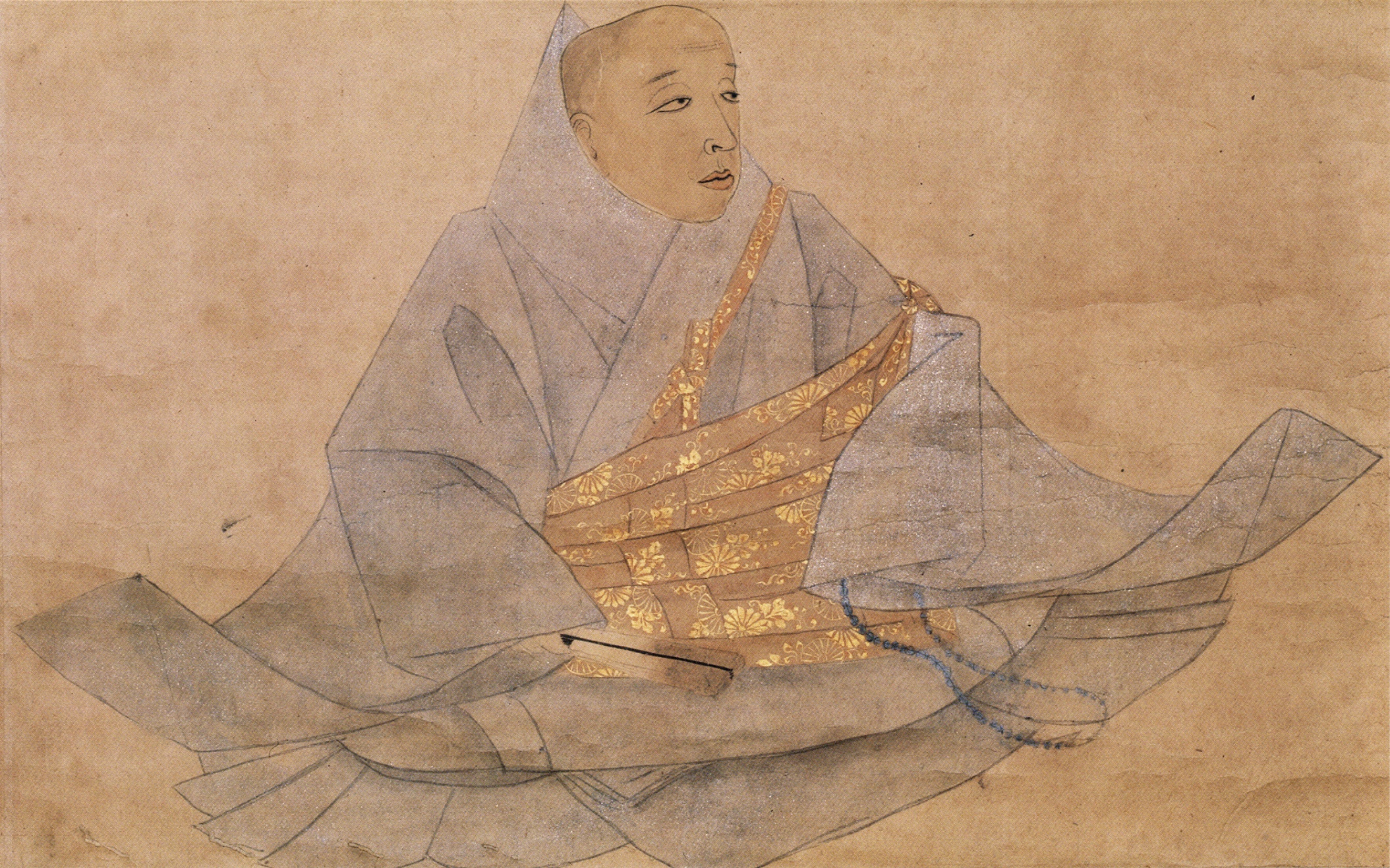|
OM MANI PADME HUM
' (, ) is the six-syllabled Sanskrit mantra particularly associated with the four-armed Shadakshari form of Avalokiteshvara, the bodhisattva of compassion. It first appeared in the Mahayana ''Kāraṇḍavyūha sūtra'', where it is also referred to as the ''sadaksara'' (, six syllabled) and the ''paramahrdaya'', or "innermost heart" of Avalokiteshvara. In this text, the mantra is seen as the condensed form of all Buddhist teachings. The precise meaning and significance of the words remain much discussed by Buddhist scholars. The literal meaning in English has been expressed as "praise to the jewel in the lotus", or as a declarative aspiration, possibly meaning "I in the jewel-lotus". ''Padma'' is the Sanskrit for the Indian lotus (''Nelumbo nucifera'') and ''mani'' for "jewel", as in a type of spiritual "jewel" widely referred to in Buddhism. The first word, '' aum/om'', is a sacred syllable in various Indian religions, and ''hum'' represents the spirit of enlightenment. ... [...More Info...] [...Related Items...] OR: [Wikipedia] [Google] [Baidu] |
Malayalam
Malayalam (; , ) is a Dravidian languages, Dravidian language spoken in the Indian state of Kerala and the union territories of Lakshadweep and Puducherry (union territory), Puducherry (Mahé district) by the Malayali people. It is one of 22 Languages with official status in India, scheduled languages of India. Malayalam was designated a "Classical Languages of India, Classical Language of India" in 2013. Malayalam has official language status in Kerala, Lakshadweep and Puducherry (Mahé, Puducherry, Mahé), and is also the primary spoken language of Lakshadweep. Malayalam is spoken by 35.6 million people in India. Malayalam is also spoken by linguistic minorities in the neighbouring states; with a significant number of speakers in the Kodagu and Dakshina Kannada districts of Karnataka, and Kanyakumari district, Kanyakumari, Coimbatore district, Coimbatore and Nilgiris district, Nilgiris district of Tamil Nadu. It is also spoken by the Malayali diaspora, Malayali Diaspora wo ... [...More Info...] [...Related Items...] OR: [Wikipedia] [Google] [Baidu] |
Tibetan Buddhism
Tibetan Buddhism is a form of Buddhism practiced in Tibet, Bhutan and Mongolia. It also has a sizable number of adherents in the areas surrounding the Himalayas, including the Indian regions of Ladakh, Gorkhaland Territorial Administration, Darjeeling, Sikkim, and Arunachal Pradesh, as well as in Nepal. Smaller groups of practitioners can be found in Central Asia, some regions of China such as Northeast China, Xinjiang, Inner Mongolia and some regions of Russia, such as Tuva, Buryatia, and Kalmykia. Tibetan Buddhism evolved as a form of Mahayana, Mahāyāna Buddhism stemming from the latest stages of Indian Buddhism (which included many Vajrayana, Vajrayāna elements). It thus preserves many Indian Buddhist Tantra, tantric practices of the Gupta Empire, post-Gupta Medieval India, early medieval period (500–1200 CE), along with numerous native Tibetan developments. In the pre-modern era, Tibetan Buddhism spread outside of Tibet primarily due to the influence of the Mongol Emp ... [...More Info...] [...Related Items...] OR: [Wikipedia] [Google] [Baidu] |
Mantra
A mantra ( ; Pali: ''mantra'') or mantram (Devanagari: मन्त्रम्) is a sacred utterance, a numinous sound, a syllable, word or phonemes, or group of words (most often in an Indo-Iranian language like Sanskrit or Avestan) believed by practitioners to have religious, magical or spiritual powers. Feuerstein, Georg (2003), ''The Deeper Dimension of Yoga''. Shambala Publications, Boston, MA Some mantras have a syntactic structure and a literal meaning, while others do not. ꣽ, ॐ (Aum, Om) serves as an important mantra in various Indian religions. Specifically, it is an example of a seed syllable mantra ( bijamantra). It is believed to be the first sound in Hinduism and as the sonic essence of the absolute divine reality. Longer mantras are phrases with several syllables, names and words. These phrases may have spiritual interpretations such as a name of a deity, a longing for truth, reality, light, immortality, peace, love, knowledge, and action. Examples of lo ... [...More Info...] [...Related Items...] OR: [Wikipedia] [Google] [Baidu] |
1348 Mogaoku Stele
Year 1348 ( MCCCXLVIII) was a leap year starting on Tuesday of the Julian calendar, the 1348th year of the Common Era (CE) and ''Anno Domini'' (AD) designations, the 348th year of the 2nd millennium, the 48th year of the 14th century, and the 9th and pre-final year of the 1340s decade. Events January–December * January – Gonville Hall, the forerunner of Gonville and Caius College, Cambridge, England, is founded. * January 25 – The 6.9-magnitude 1348 Friuli earthquake centered in Northern Italy is felt across Europe. Contemporary minds link the quake with the Black Death, fueling fears that the Biblical Apocalypse has arrived. * February 2 – Battle of Strėva: the Teutonic Order secure a victory over the Grand Duchy of Lithuania. Sources tell of a blow to Lithuanian leadership, one that the Teutonic Order could not fully make use of due to the Black Death. * April 7 – Charles University in Prague, founded the previous year by papal bull, is gra ... [...More Info...] [...Related Items...] OR: [Wikipedia] [Google] [Baidu] |
Taoism
Taoism or Daoism (, ) is a diverse philosophical and religious tradition indigenous to China, emphasizing harmony with the Tao ( zh, p=dào, w=tao4). With a range of meaning in Chinese philosophy, translations of Tao include 'way', 'road', 'path', or 'technique', generally understood in the Taoist sense as an enigmatic process of transformation Ultimate reality, ultimately underlying reality. Taoist thought has informed the development of various practices within the Taoist tradition and beyond, including forms of Taoist meditation, meditation, Chinese astrology, astrology, qigong, feng shui, and Neidan, internal alchemy. A common goal of Taoist practice is self-cultivation, a deeper appreciation of the Tao, and more harmonious existence. Taoist ethics vary, but generally emphasize such virtues as ''wu wei, effortless action'', ziran, ''naturalness'', ''pu (Taoism), simplicity'', and the Three Treasures (Taoism), three treasures of compassion, frugality, and humility. The co ... [...More Info...] [...Related Items...] OR: [Wikipedia] [Google] [Baidu] |
Hanzi
Chinese characters are logographs used to write the Chinese languages and others from regions historically influenced by Chinese culture. Of the four independently invented writing systems accepted by scholars, they represent the only one that has remained in continuous use. Over a documented history spanning more than three millennia, the function, style, and means of writing characters have changed greatly. Unlike letters in alphabets that reflect the sounds of speech, Chinese characters generally represent morphemes, the units of meaning in a language. Writing all of the frequently used vocabulary in a language requires roughly 2000–3000 characters; , nearly have been identified and included in ''The Unicode Standard''. Characters are created according to several principles, where aspects of shape and pronunciation may be used to indicate the character's meaning. The first attested characters are oracle bone inscriptions made during the 13th century BCE in what ... [...More Info...] [...Related Items...] OR: [Wikipedia] [Google] [Baidu] |
Upāsaka
Upāsaka (masculine) or Upāsikā (feminine) are from the Sanskrit and Pāli words for "attendant". This is the title of followers of Buddhism (or, historically, of Gautama Buddha) who are not monks, nuns, or novice monastics in a Buddhist order, and who undertake certain vows. In modern times they have a connotation of dedicated piety that is best suggested by terms such as " lay devotee" or "devout lay follower". From the Buddhist scriptures In the Pali Canon's ''Jivaka Sutta'', the Buddha is asked, "Lord, to what extent is one a lay follower (''upāsako'')?" The Buddha replies that one takes refuge in the Triple Gem. Asked how one is a "virtuous lay follower" (''upāsako sīlavā''), the Buddha replies that one undertakes the Five Precepts. Asked how one practices being a lay follower "both for his own benefit & the benefit of others," the Buddha states that one is consummate oneself in and encourages others in the consummation of: conviction ('' saddhā''); virtue (''sīla' ... [...More Info...] [...Related Items...] OR: [Wikipedia] [Google] [Baidu] |
Sangha
Sangha or saṃgha () is a term meaning "association", "assembly", "company" or "community". In a political context, it was historically used to denote a governing assembly in a republic or a kingdom, and for a long time, it has been used by religious associations, including Buddhists, Jains and Sikhs. Given this history, some Buddhists have stated that the tradition of the ''sangha'' represents humanity's oldest surviving democratic institution. In Buddhism, ''sangha'' refers to the monastic communities of ''bhikkhu'' (monks) and '' bhikkhuni'' (nuns). These communities are traditionally referred to as the ''bhikkhu-sangha'' or the ''bhikkhuni-sangha''. As a separate category, those Buddhists who have attained any of the four stages of enlightenment, whether or not they are members of the monastic community, are referred to as the ''āryasaṅgha'' ("noble Sangha"). According to the Theravada school and Nichiren Shoshu Buddhism, the term ''sangha'' does not refer to ... [...More Info...] [...Related Items...] OR: [Wikipedia] [Google] [Baidu] |
Guanyin
Guanyin () is a common Chinese name of the bodhisattva associated with Karuṇā, compassion known as Avalokiteśvara (). Guanyin is short for Guanshiyin, which means "[The One Who] Perceives the Sounds of the World". Originally regarded as male in Indian Buddhism, Guanyin has been more commonly depicted as female in China and most of East Asia since about the 12th century. Due to sociogeographical factors, Guanyin can also be historically depicted as genderless or adorning an androgynous apprentice. On the 19th day of the sixth lunar month, Guanyin's attainment of Buddhahood is celebrated. Guanyin has been incorporated in other religions, including Taoism and Chinese folk religion. Some Buddhists believe that when one of their adherents departs from this world, they are placed by Guanyin in the heart of a sacred lotus in religious art, lotus and then sent to the western pure land of Sukhāvatī. Guanyin is often referred to as the "most widely beloved Buddhist Divinity" with ... [...More Info...] [...Related Items...] OR: [Wikipedia] [Google] [Baidu] |
Chinese Buddhism
Chinese Buddhism or Han Buddhism ( zh, s=汉传佛教, t=漢傳佛教, first=t, poj=Hàn-thoân Hu̍t-kàu, j=Hon3 Cyun4 Fat6 Gaau3, p=Hànchuán Fójiào) is a Chinese form of Mahayana Buddhism. The Chinese Buddhist canonJiang Wu, "The Chinese Buddhist Canon" in ''The Wiley Blackwell Companion to East and Inner Asian Buddhism'', p. 299, Wiley-Blackwell (2014). draws from the traditions of Confucianism and Taoism as well as the rituals of local Chinese folk religion, folk religions. Chinese Buddhism emphasizes the study of Mahayana sutras and treatises. Some of the most important scriptures in Chinese Buddhism include the ''Lotus Sutra'', ''Avatamsaka Sutra, Flower Ornament Sutra'', Vimalakirti Sutra, ''Vimalakirtī Sutra'', ''Mahāyāna Mahāparinirvāṇa Sūtra, Nirvana Sutra,'' and Shorter Sukhāvatīvyūha Sūtra, ''Amitābha Sutra''. Chinese Buddhism is the largest institutionalized religion in mainland China.Cook, Sarah (2017). The Battle for China's Spirit: Religious R ... [...More Info...] [...Related Items...] OR: [Wikipedia] [Google] [Baidu] |
Prayer Wheels
A prayer wheel, or mani wheel, is a cylindrical wheel (, ) for Buddhist recitation. The wheel is installed on a spindle made from metal, wood, stone, leather, or coarse cotton. Prayer wheels are common in Tibet and areas where Tibetan culture is predominant. Traditionally, a mantra is written in Ranjana script or Tibetan script, on the outside of the wheel. The mantra Om mani padme hum is most commonly used, but other mantras can also be used. Prayer wheels sometimes depict dakinis and the eight auspicious symbols (''ashtamangala''). At the core of the cylinder, as the axle of the wheel, is a "life tree" made of wood or metal with mantras written on or wrapped around it. According to the Tibetan Buddhist and Bon tradition, spinning such a wheel will have much the same meritorious effect as orally reciting the prayers. Nomenclature and etymology The Tibetan term is a contraction: "" itself is a contraction of Sanskrit '' cintamani''; "" is Tibetan for ''dharma''; and " ... [...More Info...] [...Related Items...] OR: [Wikipedia] [Google] [Baidu] |
Prayer Flag
A Tibetan prayer flag is a colorful rectangular cloth, often found strung along trails and peaks high in the Himalayas. They are used to bless the surrounding countryside and for other purposes. Prayer flags are believed to have originated within the religious tradition of Bon. Barker, page 14 In Bon, shamanistic ''Bonpo'' used primary-colored plain flags in Tibet. Traditional prayer flags include woodblock-printed text and images. History Nepal Sutras, originally written on cloth banners, were transmitted to other regions of the world as prayer flags.Barker, p. 13 Legend ascribes the origin of the prayer flag to the Gautama Buddha Siddhartha Gautama, most commonly referred to as the Buddha (),* * * was a śramaṇa, wandering ascetic and religious teacher who lived in South Asia during the 6th or 5th century BCE and founded Buddhism. According to Buddhist lege ..., whose prayers were written on battle flags used by the ''deva (Hinduism), devas'' against thei ... [...More Info...] [...Related Items...] OR: [Wikipedia] [Google] [Baidu] |










